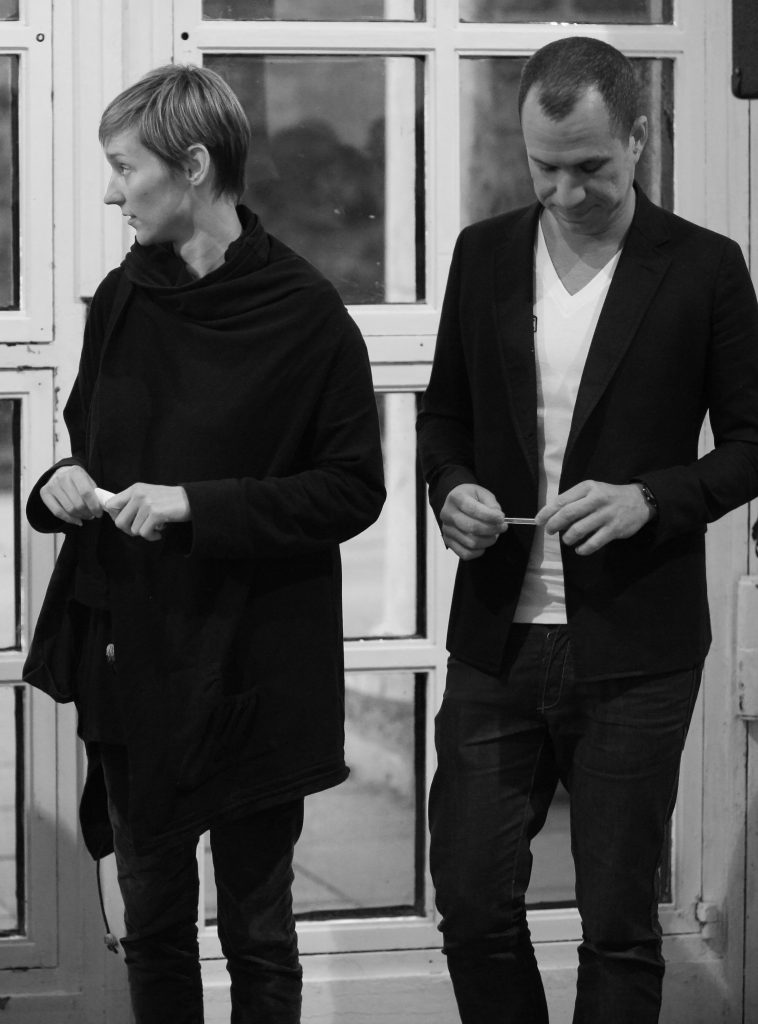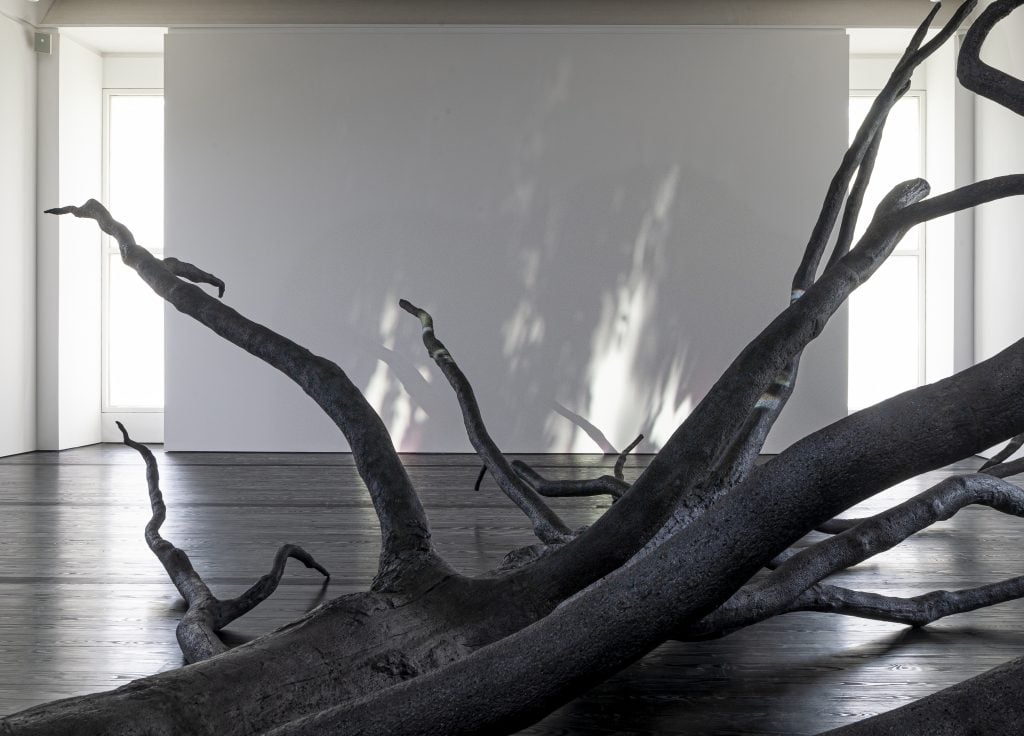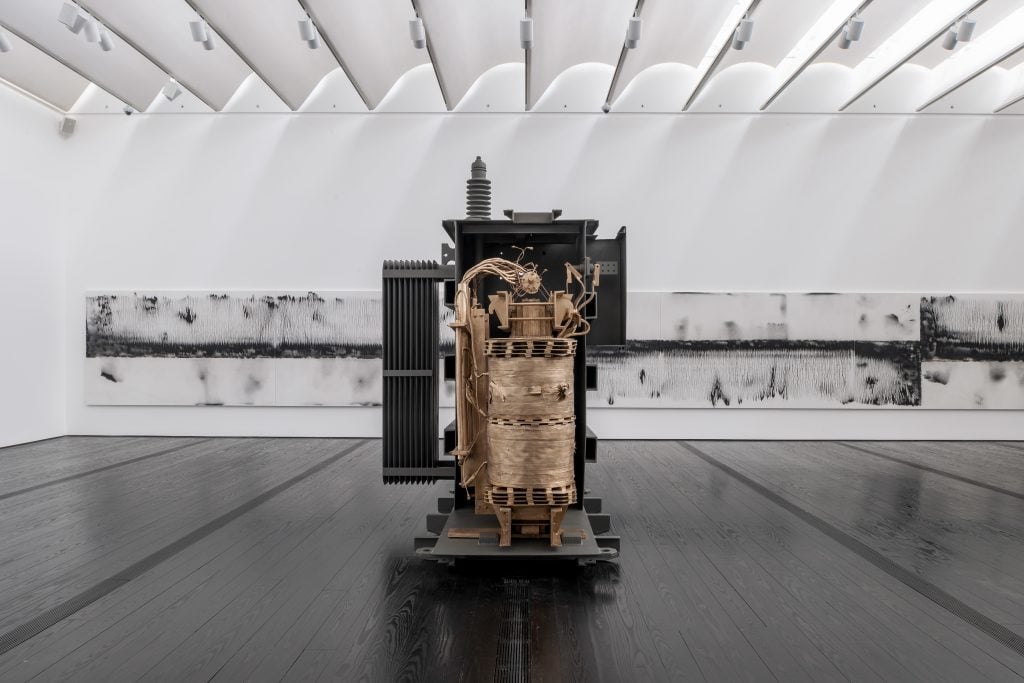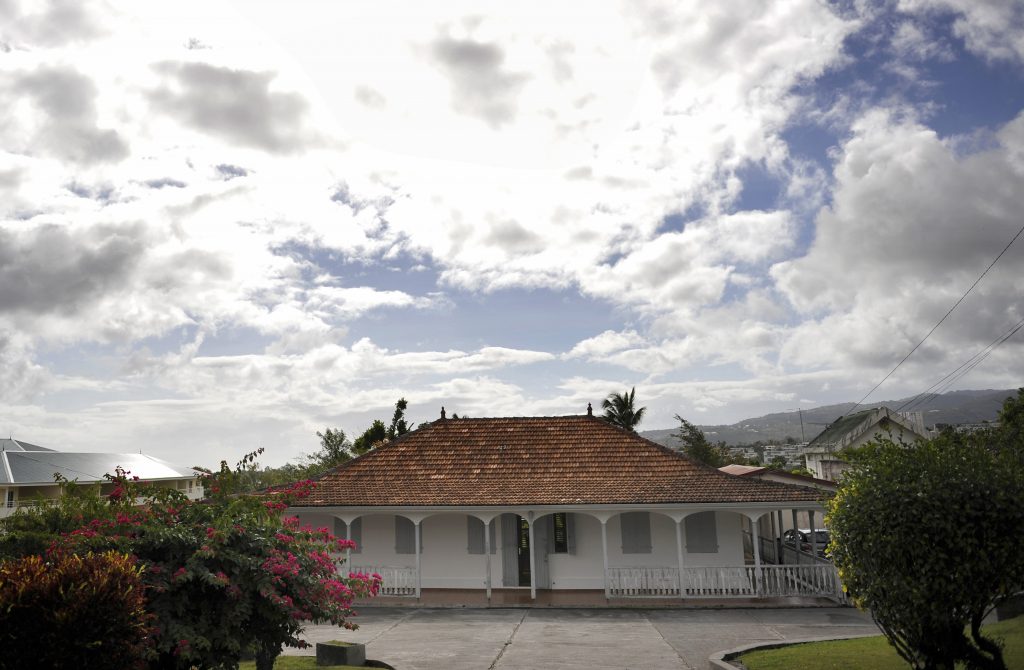People
Studio Visit: Artist Duo Allora and Calzadilla on Steering Installations Remotely and the Benefits of Eschewing Social Media
The artist duo invite us behind the scenes as they prepare for their new show at the Menil Collection in Houston.

The artist duo invite us behind the scenes as they prepare for their new show at the Menil Collection in Houston.

Artnet News

Jennifer Allora and Guillermo Calzadilla, the artists behind the duo Allora and Calzadilla, are almost always in research mode. The latest fruits of which have just been unveiled at the Menil Collection in Houston: a new exhibition, “Allora and Calzadilla: Specters of Noon” (through June 20), which presents seven multimedia works developed specifically for the site over the past four years. The show was informed by the couple’s in-depth research into the Menil’s extraordinary Surrealism collection and the role Surrealism played in the Caribbean in the years surrounding World War II.
The duo directed the installation in Houston from their home in San Juan. (They note a kinship between the two locales, which are both port cities that have been deeply affected by climate change.) We checked in with the artists to find out what life has been like in the studio, what they’re currently reading, and how they are trying to stay present “in every sense.”
What are the most indispensable items in your studio and why?
Our studio is more like a mode than a place. It’s about concentration and focus—about trying to articulate a thought or an idea. In our case, having both of us present, in every sense, is the most indispensable thing. If one of us not in the mood or our head isn’t there, it doesn’t work.
We also can’t live without our library, which is ever-expanding. Even more indispensable perhaps is researching in special collections and libraries—places that you can’t access through the internet. Once, we were looking at the collection of the Museum of Man in Paris which, at the time, was under renovation, so all the objects were off-site. After going up and down rows and rows of stacks filled with death masks of everyone from kings to the guillotined, we arrived at the makeshift office of the museum director. He reached above his desk and opened the door of a special cabinet behind him and took out two small boxes. In the first was the skull of Descartes and in the other, the Venus of Lespugue!
Is there a picture you can send of your work in progress?

Installation view of Allora & Calzadilla’s Penumbra (2020). Courtesy of Gladstone Gallery, New York and Brussels; and Entelechy (2020). Courtesy of Galerie Chantal Crousel, Paris, and Lisson Gallery, New York and London. © Allora & Calzadilla. Photo: Paul Hester
This photo shows an installation in progress at the Menil Collection in Houston, where we just recently opened a show that took us four years to make. In the background is Penumbra, a projected digital animation that recreates the effect of light passing through foliage in the tropical forest of the Absalom Valley in Martinique, where Suzanne and Aimé Césaire took a group of temporarily interred refugees fleeing war-torn France in 1941. Among the group were Claude Lévi-Strauss, Wifredo Lam, André Breton, and Helena Holzer. Penumbra is projected in the corner of the gallery at an angle based on a real-time simulation of the sun’s location overhead in Houston. The artificial light flickers across the space and intermingles with dancing patterns of the sun passing through clouds over the museum. Through this interaction, two disparate places converge and create a paradox of light.
In the foreground is Entelechy, a monumental coal sculpture cast from a pine tree felled by lightning. It was modeled after the uprooted tree that fell in Montignac, France, in 1940, which revealed to a group of teenagers the now famous Lascaux cave. There is a vocal performance that takes place on the sculpture following a musical score by our collaborator David Lang. The composition references the only image of a human figure found in the cave, a hybrid of a bird and a man.
What is the studio task on your agenda tomorrow that you are most looking forward to?
We look forward to getting the model of the Serralves Museum in Porto where we are planning a show. It is a really exceptional space designed by Álvaro Siza that we got the chance to visit in person last fall. We are excited to start playing with the model and our work to see what will be revealed in this process.
What kind of atmosphere do you prefer when you work? Do you listen to music or podcasts, or do you prefer silence? Why?
We live in a place where the wind coming off the sea has a constant and unmistakable presence. It is always changing in a never-ending drama that at times is gentle and at others is brisk and almost violent. This sound sets the mood throughout the day. Our thought and concentration are somehow shaped by it.
What trait do you most admire in a work of art? What trait do you most despise?
A sense of knowing, wonder, beauty, mastery, insight, play, honesty.
Formulas, habits, arrogance, pretension, insincerity.

Installation view of Allora & Calzadilla’s Blackout (2020). Courtesy of Lisson Gallery, New York and London. Cadastre (Meter Number 18257262, Consumption Charge 36.9kWh x $0.02564, Rider FCA-Fuel Charge Adjusted 36.9 kWh x $0.053323, Rider PPCA-Purchase Power Charge Adjusted 36.9kWh x $0.016752, Rider CILTA-Municipalities Adjusted 36.9kWh x $0.002376, Rider SUBA subsidies $1.084) (2019). Courtesy of Gladstone Gallery, New York and Brussels. © Allora & Calzadilla. Photo: Paul Hester
What snack food could your studio not function without?
Pastelillos de Chapin and coffee.
Who are your favorite artists, curators, or other thinkers to follow on social media right now?
We don’t follow social media. However, we have recently been following the tracks of the exiled Surrealists and other artists and intellectuals through the Caribbean in the 1940s. In the Caribbean, the Surrealist call for the emancipation of the tormented existentialist soul turned into a concrete project of decolonization and resistance to political and cultural suppression. Today’s identity debates are deeply enriched by revisiting these encounters.
When you feel stuck in the studio, what do you do to get un-stuck?
We’ve been going out a lot on the water with our daughter, who sails a small Opti. We accompany her in sea kayaks. Of course, she can go a lot faster than us, so we have to really paddle hard to keep up. When you are out in the ocean, you really need to concentrate on what you are doing and be totally present with your surroundings. That focus and immersion helps relax your mind.
What is the last exhibition you saw (virtual or otherwise) that made an impression on you?
Going to the Aimé Césaire’s house (now a museum) in Martinique and getting a feeling for how he worked. He liked to have the radio on with local news playing while reading the French international newspapers. His tie collection was proudly displayed upon a humble wooden coat hanger hooked on to the window latch. An ample and breezy porch wrapped around the entire house, making a pleasant space to sit and converse, very typical of vernacular Caribbean architecture.

The home of Aimé Césaire in Fort-De-France. Photo by Franck Fife/AFP via Getty Images.
Down the road at the Volcano Museum in Saint-Pierre there are artifacts on display from the aftermath of the eruption of Mount Pelée in 1902, which destroyed the entire town: a watch with the hands frozen, a massive contorted bell, a flattened lightbulb, scissors agglomerated together in single mass of metal.
Between the two locations is a large Ceiba tree that also was completely burned by the volcano but that 50 years later re-emerged alive and continues to grow to this day. Our friend, art historian Molly Nesbit, later discovered that this tree was of great importance to Césaire. She noted that for him, it “exemplified nature’s ability to absorb catastrophe.”
If you had to put together a mood board, what would be on it right now?
Writings of Evagrius of Pontus and others on Acedia and the Noonday Demon. Wifredo Lam’s The Jungle (1943). Martinican journal Tropiques (1941–45). Electromagnetism diagrams. The 1856 Guano Island Act and the 1917 Jones Act. Magellan by Stefan Zweig. Lightning-struck trees. Armando Reverón’s El Playón (1929). The monthly electrical bill. The relic of the right arm of St. John the Baptist at the Topkapi Palace in Istanbul. Tabebuia Chrysantha tree blossoms. Giuseppe Tartini’s combination tones. Nautical charts. Nazaré waves. Eugenio Montale’s Cuttlefish Bones. Cézanne’s L’Estaque (1879–83). Images of things dressed in their own shadows. A fresh Heliconia bihai flower.